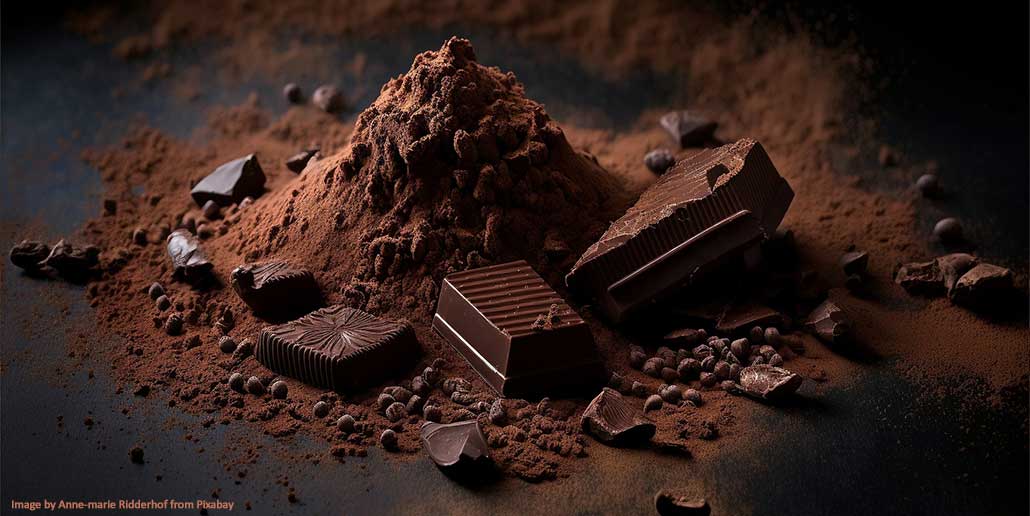
The Rich History of Chocolate
Chocolate, one of the world’s most beloved indulgences, has a fascinating history that stretches back thousands of years. Its journey from a bitter ceremonial drink in ancient Mesoamerica to the sweet, universally adored treat we know today is a testament to the cultural, agricultural, and economic shifts that have shaped the world. Let’s explore how chocolate evolved from an ancient delicacy to the global sensation it is now.
The Origins: Mesoamerica
Chocolate’s story begins over 3,000 years ago in the ancient civilizations of Mesoamerica. The Olmecs, one of the earliest cultures in the region, were likely the first to cultivate cacao trees. The word “cacao” comes from the ancient Olmec language, and it was they who first used the beans to create a bitter, foamy drink. This drink, made from ground cacao beans, was a far cry from the sugary concoctions we enjoy today. It was often flavoured with spices, chilli peppers, and even vanilla, reflecting the Olmecs’ connection to their environment.
The Maya and Aztec civilizations also revered cacao, but for them, the beans had even more significance. The Aztecs, in particular, valued cacao as both a currency and a sacred offering to their gods. Cacao beans were so precious that they were used to trade for goods, and an Aztec emperor, Montezuma II, was said to drink as many as 50 cups of chocolate daily. Unlike the sweet chocolate we recognize today, the Aztec version was made with a blend of cacao, water, and spices, and often served cold and bitter.
The Spread to Europe: A Sweet Transformation
It wasn’t until the early 1500s that chocolate made its way to Europe, courtesy of the Spanish explorers who encountered it during their conquests in the New World. Hernán Cortés, the Spanish conquistador, was introduced to the bitter chocolate drink by Montezuma during his visit to the Aztec Empire. Though initially skeptical, the Spanish began to embrace the drink, and over time, they sweetened it with sugar, cinnamon, and other spices.
By the 17th century, chocolate had become a fashionable beverage in European courts. Spain held a monopoly on cacao imports, and the drink remained a luxury for the wealthy. As chocolate spread across Europe, it was no longer confined to just the elite. It became a popular social drink in coffee houses and was even seen as an aphrodisiac. The addition of sugar and milk turned chocolate into a rich, sweet drink that was enjoyed across all classes.
The Industrial Revolution: Chocolate as a Mass Product
The Industrial Revolution of the 18th and 19th centuries marked a turning point in the history of chocolate. New technologies, like the steam engine and the conching machine, allowed chocolate to be mass-produced for the first time. In 1828, Dutch chemist Coenraad Van Houten invented the cocoa press, which separated the cocoa butter from the cocoa solids, creating a smoother, more refined chocolate. This invention laid the foundation for modern chocolate-making.
In 1847, the British chocolatier Joseph Fry discovered that adding cocoa butter to ground cocoa beans resulted in a solid chocolate bar, as opposed to a liquid. This was the first true modern chocolate bar. Around the same time, other innovators, including Rodolphe Lindt, began perfecting the process of conching, which further improved the texture and flavour of chocolate.
By the late 19th century, chocolate was being produced in large quantities, making it more affordable and accessible to the masses. In 1875, Swiss chocolatier Daniel Peter added milk powder to chocolate, creating milk chocolate, which became a worldwide sensation. Soon after, chocolate companies like Cadbury, Hershey, and Nestlé began to dominate the market, making chocolate a ubiquitous treat in homes around the world.
The Global Phenomenon
Today, chocolate is enjoyed by millions across the globe in various forms—from candy bars to gourmet truffles, and hot cocoa to baking ingredients. The global demand for chocolate has led to the growth of an industry that generates billions of dollars annually. The growing popularity of chocolate has led to advances in sustainable sourcing, with companies and organizations focusing on ethical practices and fair trade cacao production.
The rise of artisan chocolate and bean-to-bar production has also highlighted a return to chocolate’s roots. Modern chocolatiers are experimenting with unique flavours and textures, using high-quality cacao from around the world to create sophisticated chocolates that cater to the growing appreciation for fine culinary experiences.
Despite the changes in how we consume it, the essence of chocolate—its rich, indulgent taste—has remained a timeless pleasure. From ancient Mesoamerican rituals to the sweet treats of today, chocolate’s journey is a testament to human creativity, cultural exchange, and innovation.

